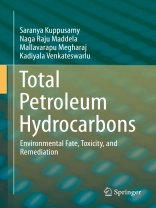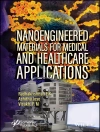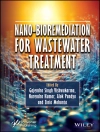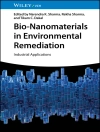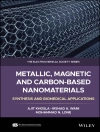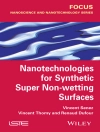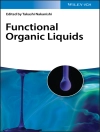The term “total petroleum hydrocarbons” (TPHs) is used for any mixture of several hundred hydrocarbons found in crude oil, and they represent the sum of volatile petroleum hydrocarbons and extractable petroleum hydrocarbons. The petrol-range organics include hydrocarbons from C6 to C10, while diesel-range organics are C10-C28 hydrocarbons. Environmental pollution by petroleum hydrocarbons is one of the major global concerns, particularly in oil-yielding countries. In fact, there are more than five million potentially contaminated areas worldwide that represent, in general, a lost economic opportunity and a threat to the health and well-being of humans and the environment. Petroleum-contaminated sites constitute almost one-third of the total sites polluted with chemicals around the globe. The land contamination caused by industrialization was recognized as early as the 1960s, but less than a tenth of potentially contaminated lands have been remediated due to the nature of the contamination, cost, technical impracticability, and insufficient land legislation and enforcement. This book is the first single source that provides comprehensive information on the different aspects of TPHs, such as sources and range of products, methods of analysis, fate and bioavailability, ecological implications including impact on human health, potential approaches for bioremediation such as risk-based remediation, and regulatory assessment procedures for TPH-contaminated sites. As such, it is a valuable resource for researchers, graduate students, technicians in the oil industry and remediation practitioners, as well as policy makers.
Inhaltsverzeichnis
An Overview of Total Petroleum Hydrocarbons (TPHs).- Methodologies for Analysis and Identification of TPHs.- Fate of TPHs in the Environment.- Bioavailability of TPHs.- Ecological Impacts of TPHs.- Impacts of TPHs on Human Health.- Approaches for Remediation of TPHs-Contaminated Sites.- Case Studies on Bioremediation of TPHs-Contaminated Sites.- Research and Regulatory Gaps on TPHs Contamination.
Über den Autor
Dr Saranya Kuppusamy obtained MSc in Agricultural Microbiology (2009-11) from the Tamil Nadu Agricultural University, Coimbatore, India. She joined the University of South Australia, Mawson Lakes, Australia in 2012 for her doctoral research with the prestigious International Postgraduate Research Scholarship together with the top-up fellowship from the Cooperative Research Centre for Contamination Assessment and Remediation of the Environment and obtained Ph D in Environmental Remediation and Public Health in 2015. Her research findings on ‘A new microbial formulation to clean up contaminated sites’ have been highlighted in Research Edge Newsletter of the University of South Australia in 2015. Later she joined the Gyeongsang National University, Jinju, South Korea in November 2015 and worked as a Research Professor until June 2018. She received ‘Excellent thesis presentation award’ offered by the Korean Society of Environmental Agriculture (KSEA) in the International Symposium and Annual Meeting of the KSEA held at Muju, the Republic of Korea in 2016. She has been availing the DST-SERB Ramanujan Fellowship (Scientist D) awarded (2018-23) by the Govt. of India at the Centre for Environmental Studies Anna University, Chennai, India. She has been actively involved in different areas of Agriculture and Environment (Soil chemistry, Fertility and management, Environmental biotechnology, Biochar, Soil and water remediation, Waste management, Crop quality improvement), and published 46 journal articles (over 850 citations, h-index of 16 and i10-index of 23), two book chapters and a book, ‘Agricultural and Industrial Microbiology’.
Dr Naga Raju Maddela received MSc (1996-98) and Ph D (2012) in Microbiology from Sri Krishnadevaraya University, Anantapuramu, India. During his doctoral program in the area of Environmental Microbiology, he investigated the effects of industrial effluents/insecticides on soil microorganisms and their biological activities. He worked as a faculty in Microbiology for 15 years, teaching undergraduate and postgraduate students. He received ‘Prometeo Investigator Fellowship’ (2013-15) from Secretaría de Educación Superior, Ciencia, Tecnología e Innovación, Ecuador, and ‘Postdoctoral Fellowship’ (2016-18) from Sun Yat-sen University, China. He received external funding from ‘China Postdoctoral Science Foundation’ in 2017 and worked in the area of Environmental Biotechnology. He participated in 19 national/international conferences and presented research data in China, Cuba, Ecuador and Singapore. Currently, he is working as a Professor at Facultad de Ciencias de la Salud, Universidad Técnica de Manabí, Portoviejo, Ecuador. He has 37 research papers to his credit besides co-authoring two books, one published by Springer Briefs and the other by Springer.
Dr Mallavarapu Megharaj joined the Global Centre for Environmental Remediation (GCER), the University of Newcastle as Professor of Environmental Biotechnology in May 2015. Prior to joining the University of Newcastle, Megh worked as Professor of Environmental Biotechnology (University of South Australia), Senior/Research Scientist (CSIRO Land & Water), and Postdoctoral Fellow (Otago University, New Zealand; GBF-National Research Centre for Biotechnology, Germany; University of Liverpool, UK). Also, for the past 14 years, he has been leading the ‘Remediation Technologies Program’ within the Cooperative Research Centre for Contamination Assessment and Remediation of the Environment (CRC-CARE). Megh is an internationally recognized expert in the areas of microbial degradation of pollutants and environmental toxicology/remediation. Most of his research involved multidisciplinary teams for which he provided the leadership role. Megh and his colleagues have field implemented and monitored natural attenuation as an effective remedial option for petroleum hydrocarbon-contaminated sites in addition to providing new scientific knowledge on fate and behaviour of emerging contaminants such as firefighting foams. Also, Megh and his colleagues have developed, and field implemented novel bioremediation technologies for petroleum hydrocarbon-contaminated soils. He currently serves as a member of the editorial board for Environmental Geochemistry and Health, and Ecotoxicology and Environmental Safety. He is an author/co-author of 390 refereed journal papers, 18 invited book chapters, five patents and co-editor of four books. He supervised 37 Ph D students, and has an h-index of 61, i10-index of 270 and total citations over 13800.
Dr. Kadiyala Venkateswarlu was a Professor of Microbiology, Sri Krishnadevaraya University, Anantapuramu, India until 2011. Taught General Microbiology, Microbial Genetics, Molecular Biology, and Genetic Engineering to MSc students. Served as Dean, Facultyof Life Sciences, and Professor-in-Charge of Biotechnology Department. His research area of interest has been Environmental Biotechnology, particularly concerned with microbial degradation of pollutants and environmental toxicology/remediation. Authored more than 150 research publications (over 3700 citations, h-index of 29 and i10-index of 78), largely in the area of environmental pollutants – soil microflora interactions and bioremediation in leading scientific journals of international repute. Guided 12 students for the award of Ph D degree, and earned an US patent. Awarded the Commonwealth Academic Staff Fellowship of the British Council to work in the University of Dundee, Dundee, Scotland in 1989. Availed twice the Visiting Senior Research Associateship awarded by the National Research Council, USA during 1995-97 and 2001-03. Received Andhra Pradesh State Universities Meritorious Teacher Award (India) in 2005 and was elected Fellow of the National Academyof Agricultural Sciences, and Association of Microbiological Sciences, India, both in 2008. Availed the Endeavour Executive award at the University of South Australia, Adelaide during 2010-11. Served as an editor of the Indian Journal of Microbiology. Edited two Textbooks of Microbiology for BSc students. Co-authored a book, ‘Insecticides – Soil Microbiota Interactions’ published by Springer.
